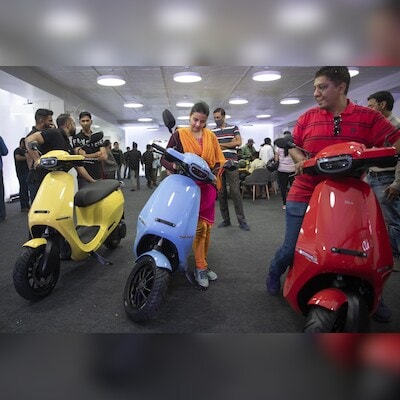)
. If Honda doesn’t move fast, it may see its Indian rivals repeat the trick on two wheels | Photo: Bloomberg
By David Fickling
Which automotive company, more than any other, is responsible for getting the world’s population moving?
Ford Motor Co., whose Model T turned the car into a mass-market product? Volkswagen AG, which sold more vehicles than any competitor over the past decade? Toyota Motor Corp., whose Corolla is the best-selling auto in history?
There’s a good case that the real answer is none of the above. Instead, it’s Honda Motor Co., whose cheap and cheerful Super Cub motorbike deserves to be recognised as the most important road vehicle in history. Since it debuted in 1958, cumulative sales have been more than 100 million, well over twice the Corolla’s numbers.
)
That makes Honda’s slow-wittedness on the next wave of the transport revolution confounding. In India, the world’s largest two-wheeler market, sales of electric motorbikes are growing faster by the month. Volumes were up 28 per cent in the year through March, even as the government wound back purchase subsidies. More electric two-wheelers were sold in the year than all battery-powered cars and three-wheeled rickshaws put together. None of them were sold by Honda.
Domestic manufacturers aren’t standing still. Ola Electric Mobility Ltd., led by Bhavish Aggarwal, has nearly half the local market and is working on an initial public offering of as much as Rs 5,500 crore ($658 million).
)
“We are just about getting started,” Bajaj’s Chief Financial Officer Dinesh Thapar told investors July 17, and will be “expanding this business in multiples in the times ahead.”
Honda has laid out ambitious plans, but it has been far too slow on the execution. By 2030, it wants to have 30 electric motorbikes on the road and be selling 4 million models worldwide a year, equivalent to about a third of its total bike volumes at present. It has promised 500 billion yen ($3.3 billion) between now and 2030 for electrifying its two-wheelers, too. That sounds like a large number, until you consider that Honda invests about four times the amount every year in capital spending, and research and development.
Three years after Chief Executive Officer Toshihiro Mibe announced plans to convert the entire business to electric, we’re still waiting for a first Indian e-scooter that the Japanese automaker has promised for later this year.
Honda needs to accelerate. The cost of batteries means e-scooters still can’t compete with gasoline bikes for rural dwellers who need to travel more than a few hours between towns. Still, their total running costs are already about two-thirds lower, according to BloombergNEF, making them an attractive option for a burgeoning market of urban commuters and delivery drivers. The palpable excitement among Indian manufacturers comes from the potential they sense in this.
)
To be sure, Honda’s dominance makes it a formidable opponent. While it only has about a quarter of the market in India, in Thailand, Indonesia, Vietnam and Brazil the number is a monopolistic three-quarters. Scale is an advantage, too: Its combined capital spending and R&D budget last year, for instance, was about 16 times that of TVS, Hero and Bajaj put together.
The trouble is that confidence means Honda risks squandering what made it a transformative company in the first place. The automaker started life in the humble business of adding auxiliary motors to pedal bikes in a shattered postwar Japan. Since then, its most precious asset has been the loyalty it has established, as the brand that consumers in emerging markets indelibly associate with the fresh joy of powered mobility.
Those aspirational customers aren’t going to switch to electric for the sake of the environment, but they’ll reward the company that provides them the cheapest way of getting from A to B. That vehicle is already electric, and the advantage is only going to increase.
Over the past year, foreign carmakers have been shocked by the speed with which Chinese EV makers squeezed them out of the world’s biggest car market with an array of cheaper, better vehicles. If Honda doesn’t move fast, it may see its Indian rivals repeat the trick on two wheels.
First Published: Jul 31 2024 | 7:59 AM IST
